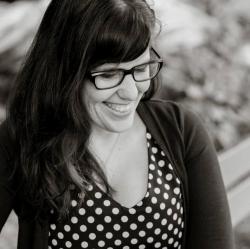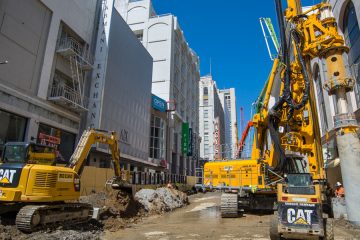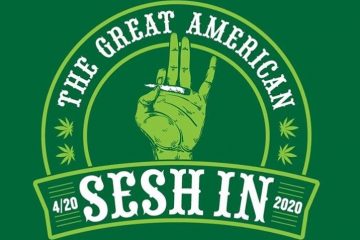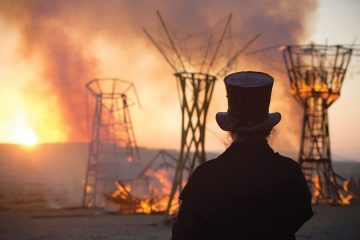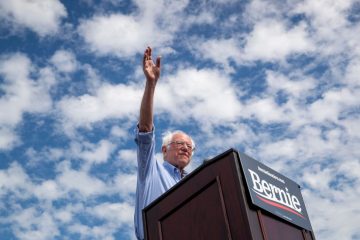Burlesque as a Revolutionary Platform for Social Justice
Guest Post by Max Silver
When most people in the United States think of burlesque, they envision a bunch of bawdy strippers dancing before a lecherous crowd, wearing nothing but fishnets, feathers, glitter, rhinestones, and tasseled pasties. While these accessories are part of the ensemble, burlesque is more than a sparkling striptease. Its origins lie in the absurd and the abstract…in perverse imitations and exaggerated effects. It is an art form which enables the artist to convey their message to an audience and in doing so encourages the potential for social change. Oftentimes, these messages are charged with politics, more so in neo-burlesque today than traditional. However, that is not to say that traditional burlesque was ever without its own politics, as evidenced from the 16thand 17thcenturies, when burlesque first began as a literary term in Italy, France, and England to describe certain plays and poetries of satire…not to mention the travesties and extravaganzas of the Victorian era. To quote Jet Noir, a well-known performer of the Bay Area, “[Burlesque] has always been about feminism, social commentary…the root definition of the word is ‘a grotesque parody’ and they’ve always been…mocking the status-quo and the things that have been marginalized whether we are talking burlesque 100 years ago or today.”
Nowadays, burlesque can be used by folks with different body types, varying skin tones, genders, and non-genders to display their unique perspectives in ways that challenge the patriarchy, dismantle systems of oppression, and open a political discourse on a broad range of topics regarding feminism, intersectionality, and social justice. I interviewed five burlesquers who distinctly represent these concepts and theories in their performances, productions, and storytelling. Akynos, Fancy Feast, Jet Noir, Andi Stardust, and Angsty Andy answered a series of questions regarding their initial interest in performing burlesque, what issues they address in their pieces and why this is important, how they want the audience to respond, and what they see in store for burlesque and intersectional feminism in the future. Angsty Andy provided me with the idea of writing this article on burlesque as a platform for intersectional feminism in the first place. Likewise, many of the questions I asked these performers during the interview were contributed by them.
Initially, interests varied from one individual to the next. However, themes of empowerment, validation, POC ownership, cultural appropriation, gender and body-stereotypes, gentrification, people seated in positions of power, and mainstream influences on the burlesque stage were issues they commonly addressed. According to New York model, performer and producer Akynos (often announced onstage as the Incredible, Edible Akynos or MFA as in Mothafuckin’ Akynos,) “About a decade ago, [the burlesque scene] was very young, white and cis-gendered… over the course of maybe the past five years or so I’m seeing a lot more diversity, a lot more male performers, a lot more full figures of women, a lot more Black and POC women taking a part in the art form.” MFA has a Caribbean and West African background. Her emphasis is “to make sure I provide space for Black performers to allow them to tell their story.” This is significant, because while stages for burlesquers who are not young, white, and cis do exist, in most major venues and showcases there is still an exclusionary preference towards white women who fit the narrow description of an extremely skinny waistline, voluptuous curves, and other attributes of the conventional beauty standard. There is nothing wrong with being a person who has a symmetrical face, identifies as white, and embodies an ‘hourglass figure,’ but burlesque is, and always has been, considered a variety show, and variety caters to a larger audience, which in turn brings greater popular demand. To quote MFA, “your audience…wants to see diversity no matter what any owner thinks…put more Black performers on stage not one or two a month, it’s not enough, there’s so many of us and we are very easy to find. They are performers, they want to be doing this work and they deserve to be doing this work.”
When MFA attended the annual New Orleans Burlesque Festival, she witnessed an all-white showcase. “[There were] only two Black people in the entire festival…I want people to understand, I want audience and producers to understand that it’s okay if you like rap and twerk…and it’s absolutely correct to have Black people doing that on the stage…[but] you absolutely should have people from those histories telling those stories and not someone else.” New Orleans has a historically large Black community, larger than most cities in the United States. When an entire festival attempts to represent that community with an all-white cast, the only accurate portrayal is cultural appropriation, in which aspects of Caribbean, African, and Creole are stolen and reproduced for white audiences only. American colonialism erased generations of Black and indigenous peoples through slavery and genocide. Neocolonialism seeks to erase their stories as well through cultural appropriation. “A lot of the stuff on burlesque stages in the U.S. is about social commentary around Black history and Black dance,” said MFA, “When I produce and perform I make sure I tell the deepest Blackest story possible whether through dance, costume, how I wear my hair…it is important to keep that dialogue happening in performance spaces.” It is important for that dialogue to be conveyed by Black people; otherwise the result is a whitewashed entertainment program that has nothing to do with burlesque or accurate storytelling.
During the 1800’s, in Victorian burlesque, women often wore breeches and other loose-fitting garments considered masculine at the time, and male performers wore corsets and layered petticoats. In the same sense, burlesque nowadays can be used to challenge gender-binaries and other preconceived notions, like the belief that one’s biological-sex determines a person’s identity, or how bodies should be portrayed as reflections of societal standards, rather than expressions of individuality. According to Jet Noir, founding member of Black Manarchy Male Revue in the Bay Area, “Black Manarchy…[is] an all-male, all-Black revue…the reason I think this show is important is because there is something that, while the world may see it, I feel from a different perspective. I see Black men being killed in the street, I see Black men being arrested and incarcerated at alarming rates, I see extinction when I see what’s happening to Black men in this country so our visibility is important. I want to be clear when I talk about Black men I am talking about cis-gender men, I am talking trans-gender men, I am talking about nonbinary.” Jet Noir went on to say that, “…it’s important to show the world that we also have art…that is less…traditional, maybe not a painting, maybe not music…not just dance but this particular art form where…the way cis gender heterosexual black men are raised is to think that anything the least bit effeminate is less than masculine…I wanna break outta that stereotype.” Not only are these Black male performers stripping themselves of attire, but they are also stripping away the labels attached to their bodies by society.
Andi Stardust, Bay Area performer, producer, and co-founder of the Body Political in San Francisco, mentioned “how the naked body has so many societal attachments to it and the ways in which we can use and manipulate those attachments to make ‘statements’…everything from confrontational political statements with the body to playing with gender absurdity and expectations.” Such expectations include roles in binary systems of belief (such as heteronormativity) as well as the illusion that someone’s sex dictates or has anything to do with that person’s gender. Andi Stardust has an act depicting the shaming of menstruation, an issue not only degrading toward women, but for all menstruators.“That act is about reclamation, about saying [there is] nothing to be ashamed of, we don’t need to hate this. We’re going to use it as a political power, use it as a source of being in our body.” It is empowering for people to have self-ownership, and the more varying experiences of humanity we represent onstage, the more inclusive we become as a community. According to Andi Stardust, “[With producing] Body Political…if it has to do with body we want it on our stage…”
While there is some intersectional feminism in burlesque, Andi Stardust stated that “we have a lot of work to do in terms of becoming an intersectional community…” Part of this has to do with how many of these concepts regarding inclusivity have only recently begun to take effect. Jet Noir mentioned that the “Bay Area is pretty good about shows that will have people that fit into various categories, whether the performer may identify themselves as fat or Black or queer or all of the above,” but he also admitted that “there’s only recently been…a surge of men on the stage.” Although men have performed in burlesque theatres since the Victorian era, it is dominantly white cis women-bodies that we see onstage. However, there seems to be a growing awareness of intersectionality, and a need for activism within modern spaces. The difficulty may come with getting these acts booked.
Self-proclaimed fat feminist Fancy Feast, a New York burlesquer and co-producer of the Fuck You Revue, remarked, “Different acts of mine have different points of view or focus on different aspects of me or of society. I’ve made an act about whiteness and one about my experiences with sexual violence – would you believe that those don’t get booked often?” Due to the lack of representation in mainstream media, as well as the division of marginalized peoples into subcategories, there is still more to be desired from burlesque in terms of feminism and intersectionality. To quote Andi Stardust, “What I wanna see more in burlesque is people from a lot of different backgrounds that we don’t typically expect in mainstream, also [in terms of] intersection of identities we talk about these as separate POC performers, queer performers, trans performers, [and] larger performers, but where are all the intersections of those identities, and where are we seeing the intersection of those identities on our mainstream burlesque stages?”
Angsty Andy is a new performer in the Bay Area. “So far I have a piece on calling out the tech-industry for forwarding gentrification in the Bay Area and a piece on living with bipolar. For me these pieces are my lived experiences and I know they are also shared amongst wider communities.” Angsty Andy seeks “to use the stage and offer a voice where folks who can relate may feel validated and empowered, and for those who can’t, they are offered a potential learning experience.” Validation is important when communicating with others, as it is a form of showing solidarity. To quote Jet Noir, “It’s important that I respect the challenges that women have to go through with blue laws… I make sure to wear pasties because if they cannot show their nipples I shouldn’t be able to show mine…” Even though Jet Noir is male, he still covers his nipples when stripping on stage. Although male nipples are generally regarded as having little to no consequence, it is oddly controversial when a woman exposes her breasts in public. Issues such as these should be confronted directly, not merely online but on the streets, and at town halls, courthouses, public spaces, homes and residencies.
When asked about the audience, results varied. However, themes of validation, empowerment, acceptance of what the audience does and does not take away from these performances, and the need to take action, were most prevalent in their responses. Akynos wanted to emphasize that “Black dance is important, Black history is important, Black bodies are important.” She hopes the audience understands that“it’s okay for it to not be watered down in this very white ascetic narrative of the burlesque community at large.” By encouraging Black stories to be told by Black performers, MFA furthers diversity and encourages accurate storytelling, which preserves the actual histories of the people who live in this country, rather than subjecting them to whitewashed propaganda. To summarize MFA’s thoughts on what the audience should take away from these shows in regards to cultural appropriation, if you are white, “don’t use Black culture.”
Andi Stardust wants audience members to question what they have been taught in social narratives. “I want people to question why they responded a certain way, why when I eat menstrual blood on stage do you think it is gross? … When you look at that where did that idea come from? Ultimately, we want people to take action.” Depictions of bodies menstruating through mainstream media outlets, especially ones owned by men, often take on a vulgar, comedic role that is to the vagina-owner’s expense. Menstruation is a reproductive cycle that many humans experience. This process is nothing to be ashamed of. Why then are periods treated with such disdain in our culture? According to Andi Stardust, “For us… it’s about people doing something on stage that inspires them… making a connection between performance arts and activism.” In order to enact social change, authoritarian figures and their influences must be challenged, and one way to do that is through activism.
Fancy Feast mentioned how, “Most of my advocacy work takes place outside of burlesque, actually – I don’t want to just talk about stuff, I want to be about stuff.” Along with her co-producer Zoe Ziegfeld, Fancy Feast donates money from the Fuck You Revue to activist organizations every month, which simultaneously offers stage time for them to promote awareness on these issues and raise cash.
When Angsty Andy performed their debut in Oakland, “There were some dudes who saw my anti-gentrification performance who I assume were part of the tech industry because they were all about my act until I revealed the ending prop which reads ‘STOP THE TECHIE TAKEOVER.’ At which point they fell totally silent, stopped clapping, and looked very awkward. I did not expect this, but I am glad that it happened…I feel like this is a culture that rarely gets called out in connection to displacement in places of pleasure…” For those who are reading this article and consider themselves ‘techies,’ this is not a personal attack. However, gentrification is a problem, because there is not an adequate distribution of wealth to keep low-income families who have deep-rooted cultural backgrounds and ancestral ties to these cities from being kicked out, and the tech industry is furthering that process by ignoring individuals who have less privilege. A society that neglects those who are the most vulnerable is not implementing the powers of technology in ways that can be considered good or efficient… rather, it is violent and manipulative.
Many of these performers also shared what it felt like when an audience member came up to them after the show to convey a profound emotional response. According to Andi Stardust, “I am constantly in awe of how something can resonate so deeply with someone in the audience that you didn’t even know shared a similar experience or a similar story or it might not be a similar story. It might be a story they’ve never heard before unlocking something and changing something in them and that to me is really why we are doing this.” Whether it is a genuine display of laughter, catharsis, or unsolicited advice, these burlesquers have received a lot of varying feedback over the years. However, it should be noted that they have no control over the audiences’ perceptions of their performances. According to Fancy Feast, “When done right, being on stage is like giving people a mirror or lens through which to observe themselves. So much of what burlesque does is give permission.” Illustrating a consensual narrative through art and entertainment helps provide a safer space for bigger communities to thrive. Performers have the power on stage to leave a lasting impression, perhaps one that is memorable for years and invokes a broad range of powerful emotions, but there is still no guarantee on how any specific member of the audience will perceive it.
When asked about the future of burlesque in regards to intersectional feminism, there were different outlooks, some positive, others bleak. According to MFA, “…People have a little uproar and then it goes back to normal…Black people will continue to create spaces to tell their stories, but I feel like especially in the U.S. [with] such a racially intense climate, until [this country] starts really doing some work around racism nothing much is gonna change… It’s 2018, I’ve been doing burlesque since 2007 [and it’s] literally the same thing.” Jet Noir shared a similar sentiment that not much would change in burlesque compared to today. “I know that sounds…pessimistic, but…what happens is the people that need to make change are not the people on the outside, not the people on the margins, not the Black, the queer, the trans, the marginalized people that need to make change. It is the people in positions of comfort, it’s the white people who are in positions where they can easily say ‘hey we are gonna band together until these marginalized people are getting the same comforts that we are getting’ but that’s never gonna happen because white people have more to gain from being under the protective umbrella of White Supremacy than they have to gain from the umbrella of Allyship.” Even though overt racism is no longer as socially acceptable as it used to be, other methods have been institutionalized. There is racism in schools, in shows, in restaurants, churches, courts, prisons, at work, and at home. The Civil Rights Act of 1964 has only been around for 54 years, as opposed to almost a hundred years of Segregation, and beneath that, centuries of American colonial slavery. Equality is unknown to this nation. Now is the time for people with privilege to join the effort in dismantling the social, cultural, and economic systems of oppression that harm, exploit, and murder people based on their existing identities.
Fancy Feast has aspirations for the platform’s future success. “I hope that we will have a scene that encourages innovation and rigorous development. I hope we will have a scene that supports people financially. I hope the scene will reflect a plurality of identities and experiences. I hope we will have more women-run venues. I hope we will continue to be ambitious individually and supportive collectively.” I understood this statement as a good set of themes on diversity and empowerment.It would also be a significant change for burlesquers to be adequately paid for their performances, as for the most part, costume-design and other creative investments are so costly that for the artist it is often ‘a labor of love’ rather than an occupation that can be relied on to generate substantial profit. This is why audience members should always tip before, during or after a show, as burlesque is hard work that goes underpaid.
Andi Stardust sees the future of intersectional burlesque as a growing platform in which further inclusion will happen, whether mainstream culture likes it or not. “A part of the responsibility of producers [is] not only to book acts that explore intersectionality but also to create intersectional spaces in shows and call stages ‘intersectional.’ There is going be a turning point where they’re not going to have a choice, so much of that happening as a critical mass that it’s going to explode.” As more performers galvanize the audience with themes relating to feminism and equality, more people will feel inclined to participate, and in doing so they will bring messages of their own to the stage, adding further to the essence of burlesque as a variety-show capable of inspiring social change. However, in order for that inspiration to take effect, it is still up to the people who witness the art form to take a stance on these issues in their own daily lives. “I think that we as performers and artists have a lot of political power,” said Angsty Andy, “It’s just a matter of organization. It really depends on peoples’ capacity in order to get organized.” Sustainable social change occurs within the communities we are a part of, and the artist community is not exempt. In fact, this community in particular has the enormous benefit of acting as the tellers of our stories, new and old. The ways in which we narrate is pivotal to our individual, group, cultural, and universal behavior and experience.
To summarize, burlesque today is just as capable of challenging the status-quo as when it first came out to ridicule the Victorians and others from earlier events throughout the history of mankind. There is hope for the future of feminism and intersectionality, but there is also racism, gentrification, gender discrimination and violence, body-stereotypes, mental health stigmas, and other obstacles which are a constant threat to this country’s overall well-being. For as long as people in positions of power do nothing, the mainstream agenda will continue running its blind and volatile course. The people who hold the most privilege must start advocating for spaces that demonstrate equitable representation. A new narrative must be established, one that is accurate, original, and fully inclusive of those who have touched this soil we call the United States.
Listed below are the names of the performers interviewed for this article, along with their websites, handles, and a brief description relating to their performances and productions. For full answers provided by these burlequers for the questions initially posed during the interview, you can visit my blog, in which their responses will be recorded along with others in an ongoing research project meant for free public access. Any and all performers who have pieces that relate to burlesque as a platform for intersectional feminism are welcome to submit answers for these same interview-questions, which will be added to the archive here: sangfroidbooksinc.wordpress.com/
MF Akynos
Akynos is the founder of the Black Sex Worker Collective. She recently performed at the International AIDS Conference in Amsterdam on July 23rd.
Website: akynos.com
Twitter: @akynos
Facebook: facebook.com/theincredibleedibleakynos
Fancy Feast
The Fuck You Revue occurs every third Tuesday at Bizarre Bushwick in New York City. Fancy Feast recently coproduced a show of all duets at Coney Island on July 20.
Twitter: @fancyburlyq
Instagram: @fancyfeastburlesque
Jet Noir
Jet Noir is a founding member of Black Manarchy Male Revue, which will be on display Friday night, August 17 at the DNA Lounge in San Francisco.
Website: bodyfaming.com
Andi Stardust
The Body Political, co-founded by Andi Stardust and Laika Fox, aims to provide a stage for artists to reclaim their bodies and resist against society’s inaccurate portrayals of body-stereotypes. Their next show in San Francisco will be in 2019. Stay tuned!
Facebook: facebook.com/andi.stardust
Body Political website: thebodypolitical.com
Body Political FaceBook: facebook.com/thebodypolitical
Body Political Instagram: @thebodypolitical
Angsty Andy
Angsty Andy’s next show will be on August 2ndat the Garter Room hosted at the Legionnaire Saloon in Oakland. They are also the creator of Pervy Pins, a small pin company that features what they call “vintage pervology,” or, imagery and text from vintage playboys and comic erotica.
Instagram: @angstyandyburlesque
Pervy Pins Instagram: @pervypins







